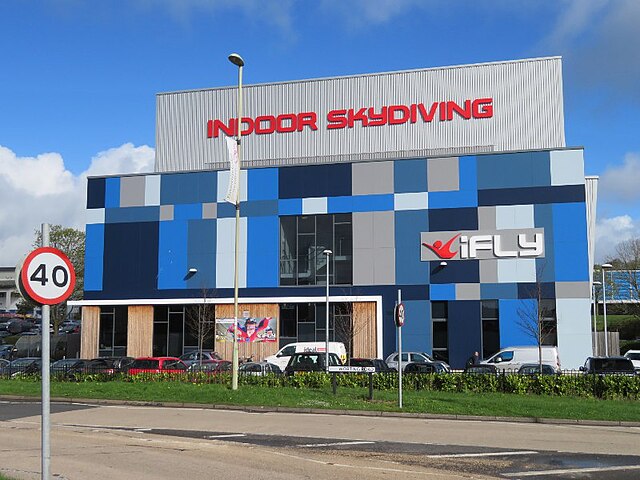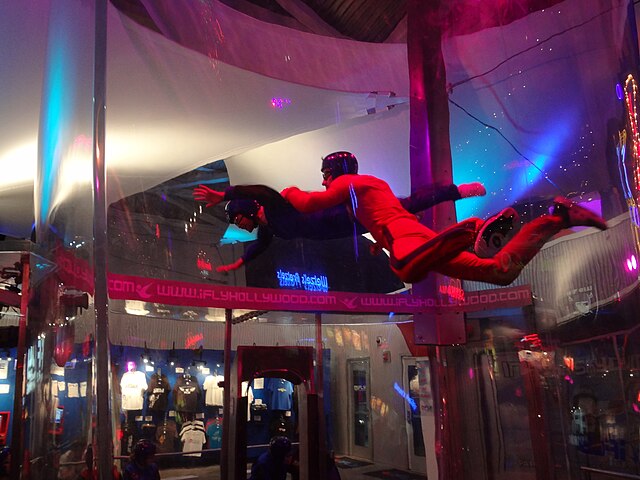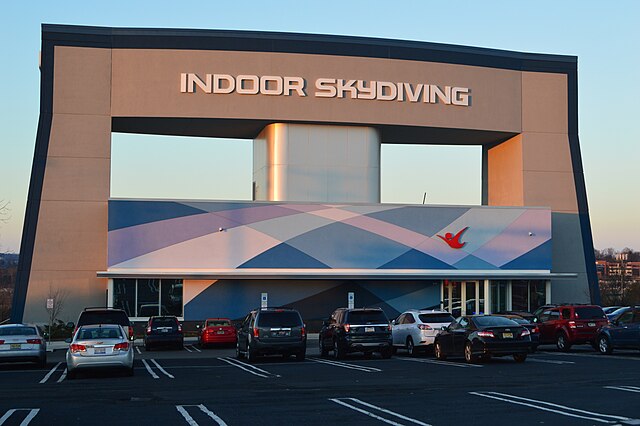Have you ever dreamed of soaring through the sky like a bird, feeling the rush of wind beneath you without the terrifying prospect of jumping out of an airplane? Welcome to the incredible world of iFLY indoor skydiving, where your wildest flying dreams become reality in a safe, controlled environment.
Indoor skydiving has transformed from a niche training tool for professional skydivers into a thrilling recreational activity that millions of people worldwide enjoy. Whether you’re an adrenaline junkie seeking your next fix or someone who’s always wondered what it feels like to fly, iFLY offers an experience that’s both accessible and absolutely exhilarating.
What is iFLY Indoor Skydiving?
iFLY indoor skydiving is a revolutionary recreational activity that simulates the freefall experience of traditional skydiving using powerful vertical wind tunnels. These state-of-the-art facilities create controlled airflow that allows participants to float, fly, and perform aerial maneuvers in a safe indoor environment.
Unlike traditional skydiving, which requires jumping from aircraft at altitudes of 10,000-15,000 feet, iFLY brings the skydiving experience to ground level. The technology uses multiple fans to generate wind speeds of up to 175 miles per hour, creating the perfect conditions for human flight simulation.
The Science Behind Indoor Skydiving
The physics of indoor skydiving relies on the principle of terminal velocity – the speed at which an object falls when the force of gravity equals the air resistance acting upon it. For the average human body, terminal velocity is approximately 120 miles per hour when in the belly-to-earth position.
iFLY’s wind tunnels are engineered to produce precisely this wind speed, creating an equilibrium where participants can float effortlessly in mid-air. The vertical wind tunnel design ensures smooth, laminar airflow that provides stable flying conditions for beginners while offering enough turbulence variation for advanced flyers to practice complex maneuvers.
How iFLY Revolutionized Skydiving
Before iFLY’s emergence in the late 1990s, learning to skydive required extensive training, multiple airplane jumps, and significant financial investment. The company’s founder, Alan Metni, recognized the potential to make the skydiving experience more accessible by bringing it indoors.
This innovation democratized the sport, allowing people of various ages, physical abilities, and comfort levels to experience human flight. What once required months of training and perfect weather conditions could now be enjoyed in a single afternoon session, regardless of external weather conditions.
The Complete iFLY Experience

Walking into an iFLY facility feels like stepping into the future. The massive glass cylinder housing the wind tunnel dominates the space, surrounded by viewing areas where friends and family can watch and record your flight experience.
What to Expect on Your First Visit
Your iFLY adventure begins with a comprehensive training session led by certified instructors. This isn’t just a quick safety briefing – it’s an engaging educational experience that prepares you mentally and physically for flight.
During the training session, you’ll learn essential body positioning techniques, hand signals for communication inside the wind tunnel, and safety protocols. The instructors demonstrate proper flying posture, explaining how subtle body movements can dramatically affect your flight experience.
The actual flying experience typically consists of two 60-second flights, though this may vary depending on the package you choose. Each flight feels much longer than 60 seconds when you’re floating in the air, and the sensation is absolutely indescribable.
Safety Measures and Equipment
Safety is iFLY’s top priority, and their comprehensive safety protocols reflect years of experience and continuous improvement. Every participant undergoes a thorough safety briefing, and certified instructors are present in the wind tunnel during every flight.
Flight Suits and Protective Gear
iFLY provides all necessary equipment, including specially designed flight suits that create the proper airflow characteristics for stable flight. These suits are loose-fitting to catch air effectively while maintaining safety and comfort.
Protective gear includes helmets, goggles, and earplugs to protect against the intense wind noise. The equipment is sanitized between uses, ensuring hygiene standards are maintained for every flyer.
Professional Instructor Guidance
Certified flight instructors are present during every flight session, providing real-time guidance and ensuring participant safety. These professionals undergo extensive training and certification processes, many with backgrounds in traditional skydiving or military aviation.
The instructor-to-participant ratio is carefully maintained to ensure personalized attention and immediate assistance when needed. Instructors can quickly adjust flying positions, provide stability, and help participants achieve optimal flight experiences.
iFLY Locations Worldwide
iFLY has expanded rapidly since its inception, with locations spanning multiple continents and serving millions of customers annually. The company’s growth reflects the universal appeal of the indoor skydiving experience.
United States Locations
The United States hosts the majority of iFLY locations, with facilities in major metropolitan areas from coast to coast. Popular locations include Las Vegas, Orlando, Seattle, Austin, and dozens of other cities.
Each location is strategically placed to serve both local communities and tourist destinations. The Las Vegas location, for example, attracts millions of visitors annually, while suburban locations focus on serving local families and recurring customers.
International Expansion
iFLY’s international presence continues growing, with locations in Canada, Australia, Europe, and Asia. Each international location adapts to local regulations and cultural preferences while maintaining the core iFLY experience standards.
The company’s expansion strategy focuses on major tourist destinations and densely populated urban areas where the target demographic has both the interest and disposable income for recreational indoor skydiving.
Cost and Pricing Structure
Understanding iFLY’s pricing structure helps you choose the package that best fits your budget and experience goals. Pricing varies by location, package type, and group size, but most locations offer similar package structures.
Package Options and Deals
Basic first-time flyer packages typically include training, equipment rental, and two flights. Prices generally range from $70-$100 per person, depending on location and current promotions.
Return flyer packages offer better value for those who’ve completed their initial training, often providing longer flight times at reduced per-minute costs. Many locations offer membership programs for frequent flyers, providing significant discounts and priority booking privileges.
Group Rates and Corporate Events
iFLY offers attractive group pricing for parties of six or more, making it popular for birthday celebrations, corporate team-building events, and family gatherings. Group packages often include additional perks like private training sessions, group photos, and flexible scheduling options.
Corporate packages can be customized to include team-building activities, private facility rentals, and catering options, making iFLY an increasingly popular choice for unique corporate events.
Age Requirements and Physical Limitations
One of iFLY’s greatest advantages is its accessibility to people of various ages and physical abilities. Unlike traditional skydiving, which has strict age and health requirements, indoor skydiving accommodates a much broader demographic.
Kids and Family Flying
Children as young as three years old can participate in iFLY experiences, making it an exceptional family activity. The company has developed specialized programs for different age groups, ensuring age-appropriate instruction and safety measures.
Family packages encourage multi-generational participation, creating shared experiences that families treasure for years. Many families make iFLY visits annual traditions, documenting their children’s progression as they develop flying skills over time.
Senior Citizens and Accessibility
iFLY welcomes senior citizens and individuals with various physical limitations, though certain restrictions apply for safety reasons. The company works with individuals who have mobility challenges to determine appropriate accommodations.
People with certain medical conditions, including heart problems, back injuries, or recent surgeries, may be restricted from participating. However, the company’s inclusive approach means that many people who cannot participate in traditional extreme sports can enjoy the indoor skydiving experience.
Preparing for Your iFLY Adventure

Proper preparation enhances your iFLY experience and helps ensure you get the most value from your flight time. Understanding what to expect and how to prepare physically and mentally makes a significant difference in your enjoyment.
What to Wear and Bring
iFLY provides all necessary flying equipment, but your clothing choices can impact your comfort and safety. Comfortable, athletic clothing works best, avoiding loose jewelry, drawstrings, or anything that might become problematic in high-speed airflow.
Closed-toe shoes are required, with athletic shoes being the preferred option. Long hair should be secured, and contact lens wearers should consider bringing glasses instead, as the intense airflow can cause contact lens displacement.
Physical and Mental Preparation
While indoor skydiving doesn’t require exceptional physical fitness, basic flexibility and core strength enhance the experience. Simple stretching exercises before your flight can help you maintain proper body positioning and reduce muscle tension.
Mental preparation is equally important. Understanding that your instructor will guide you throughout the experience and that the environment is completely controlled helps reduce anxiety and allows you to focus on enjoying the sensation of flight.
Advanced Flying Techniques
Once you’ve mastered basic indoor skydiving skills, a whole world of advanced techniques and maneuvers becomes available. Many iFLY locations offer coaching programs for those interested in developing more sophisticated flying abilities.
Learning Professional Maneuvers
Advanced indoor skydiving involves learning complex maneuvers that professional skydivers and competitive flyers perform. These include coordinated group flights, artistic movements, and precision flying techniques.
Body Positioning and Control
Advanced flying requires precise body positioning and subtle control movements. Learning to adjust your body’s surface area, angle, and positioning allows for controlled movement in three-dimensional space.
Professional-level flying involves understanding how minor adjustments in arm, leg, and torso positioning create dramatic changes in flight direction, speed, and stability. This level of control takes considerable practice and professional instruction to develop.
Advanced Coaching Programs
iFLY offers structured coaching programs for serious enthusiasts who want to develop professional-level skills. These programs provide personalized instruction, extended flight time, and progression through increasingly complex maneuvers.
Advanced coaching can lead to instructor certification, competitive flying opportunities, or simply the personal satisfaction of mastering an incredibly challenging and rewarding skill set.
iFLY vs Traditional Skydiving
Comparing indoor and outdoor skydiving helps potential participants understand the unique advantages and limitations of each experience. Both offer the sensation of human flight, but the experiences differ significantly in several key areas.
Safety Comparisons
Indoor skydiving eliminates many risks associated with traditional skydiving, including aircraft mechanical failures, weather-related complications, parachute malfunctions, and landing injuries. The controlled environment allows for immediate instructor intervention if problems arise.
Traditional skydiving, while statistically safe when proper procedures are followed, inherently involves more variables and potential complications. The altitude, weather dependency, and equipment complexity create additional risk factors that indoor skydiving eliminates.
Learning Curve Differences
Indoor skydiving allows for rapid skill development through immediate repetition and constant instructor feedback. Traditional skydiving requires extensive ground training, weather-dependent scheduling, and significant time between learning opportunities.
The ability to practice consistently in controlled conditions means indoor skydiving students can develop skills much faster than traditional skydiving students, who might wait weeks between jumps due to weather or scheduling constraints.
Special Events and Competitions
iFLY facilities regularly host special events, competitions, and unique experiences that extend beyond basic recreational flying. These events create community engagement and provide additional entertainment value for both participants and spectators.
Birthday Parties and Celebrations
iFLY has become an increasingly popular venue for birthday parties, graduation celebrations, and other milestone events. The unique nature of the experience creates memorable celebrations that guests discuss for years afterward.
Party packages typically include group flights, private training sessions, facility decorations, and sometimes catering options. The visual spectacle of indoor skydiving creates excellent photo and video opportunities for documenting special occasions.
Professional Competitions
Competitive indoor skydiving has evolved into a legitimate sport with national and international competitions. iFLY facilities often host or sponsor these events, providing venues for athletes to showcase their skills.
Competitive categories include freestyle flying, formation flying, and artistic performances. These competitions demonstrate the incredible skill levels achievable through dedicated practice and professional instruction.
Health Benefits of Indoor Skydiving
Beyond the obvious entertainment value, indoor skydiving provides several physical and mental health benefits that participants often don’t anticipate. The unique combination of physical challenge and mental engagement creates a comprehensive wellness experience.
The core strength required for proper body positioning provides an excellent abdominal workout. Maintaining stability against powerful airflow engages multiple muscle groups simultaneously, creating a full-body exercise experience that feels more like play than work.
Mental health benefits include stress relief, confidence building, and the satisfaction of conquering fears. Many participants report feeling more confident and accomplished after their indoor skydiving experience, particularly those who overcame initial anxiety or fear.
The concentration required for proper flying technique creates a meditative state where participants focus entirely on the present moment, providing mental clarity and stress relief similar to other mindfulness practices.
Tips for Maximizing Your iFLY Experience
Getting the most value from your iFLY experience requires understanding how to prepare, what to expect, and how to approach the learning process. These insights help ensure your investment in this unique experience pays dividends in enjoyment and skill development.
Arrive early to fully absorb the training session without feeling rushed. The information provided during training directly impacts your flight quality, so paying attention to details makes a significant difference in your experience.
Relax and trust your instructor’s guidance. Fighting against the instructor’s corrections or trying to control every aspect of your flight often leads to tension and reduced enjoyment. Learning to surrender control and trust the process enhances both safety and fun.
Consider purchasing additional flight time if your budget allows. The first flight often involves learning basic stability, while subsequent flights allow for more enjoyment and skill development. Many participants wish they had purchased more flight time after experiencing their first flights.
Document your experience through photos and videos, but don’t let recording detract from being present in the moment. Many facilities offer professional photography services that capture your flights without requiring friends or family to operate cameras.
Conclusion
iFLY indoor skydiving represents a remarkable achievement in making the dream of human flight accessible to millions of people worldwide. By combining cutting-edge technology with comprehensive safety protocols and professional instruction, iFLY has created an experience that’s simultaneously thrilling and safe.
Whether you’re seeking an adrenaline rush, want to try something completely unique, or are interested in developing a new skill, indoor skydiving offers something for everyone. The experience transcends age, physical ability, and experience levels, making it truly inclusive entertainment.
The memories created during an iFLY experience last far beyond the brief flight time. The sensation of weightlessness, the rush of controlled flight, and the accomplishment of mastering something entirely new combine to create lasting positive memories.
As iFLY continues expanding globally and technology continues improving, indoor skydiving will likely become even more accessible and realistic. For now, it represents the closest thing to actual human flight that most people will ever experience, and that alone makes it worth trying at least once in your lifetime.
Frequently Asked Questions
Q1: Is indoor skydiving safe for people with no prior experience?
Yes, indoor skydiving is extremely safe for beginners. iFLY maintains rigorous safety standards, provides comprehensive training, and ensures certified instructors are present during every flight. The controlled environment eliminates most risks associated with traditional skydiving.
Q2: How much does a typical iFLY experience cost?
Prices vary by location but typically range from $70-$100 for first-time flyer packages including training and two flights. Group discounts, return flyer packages, and membership programs can provide better value for multiple visits.
Q3: What age restrictions apply to indoor skydiving?
Children as young as 3 years old can participate in iFLY experiences with appropriate supervision and instruction. There’s no upper age limit, though certain medical conditions may restrict participation for safety reasons.
Q4: How does indoor skydiving compare to jumping from an airplane?
Indoor skydiving provides the freefall sensation without altitude, weather dependency, or parachute requirements. While different from traditional skydiving, it offers a safe, controlled way to experience human flight that many find equally thrilling.
Q5: Can people with physical disabilities participate in indoor skydiving?
iFLY accommodates many people with physical limitations, though specific restrictions apply for safety reasons. The company evaluates individual situations and works to provide appropriate accommodations when possible. Contact your local facility to discuss specific needs and requirements.

